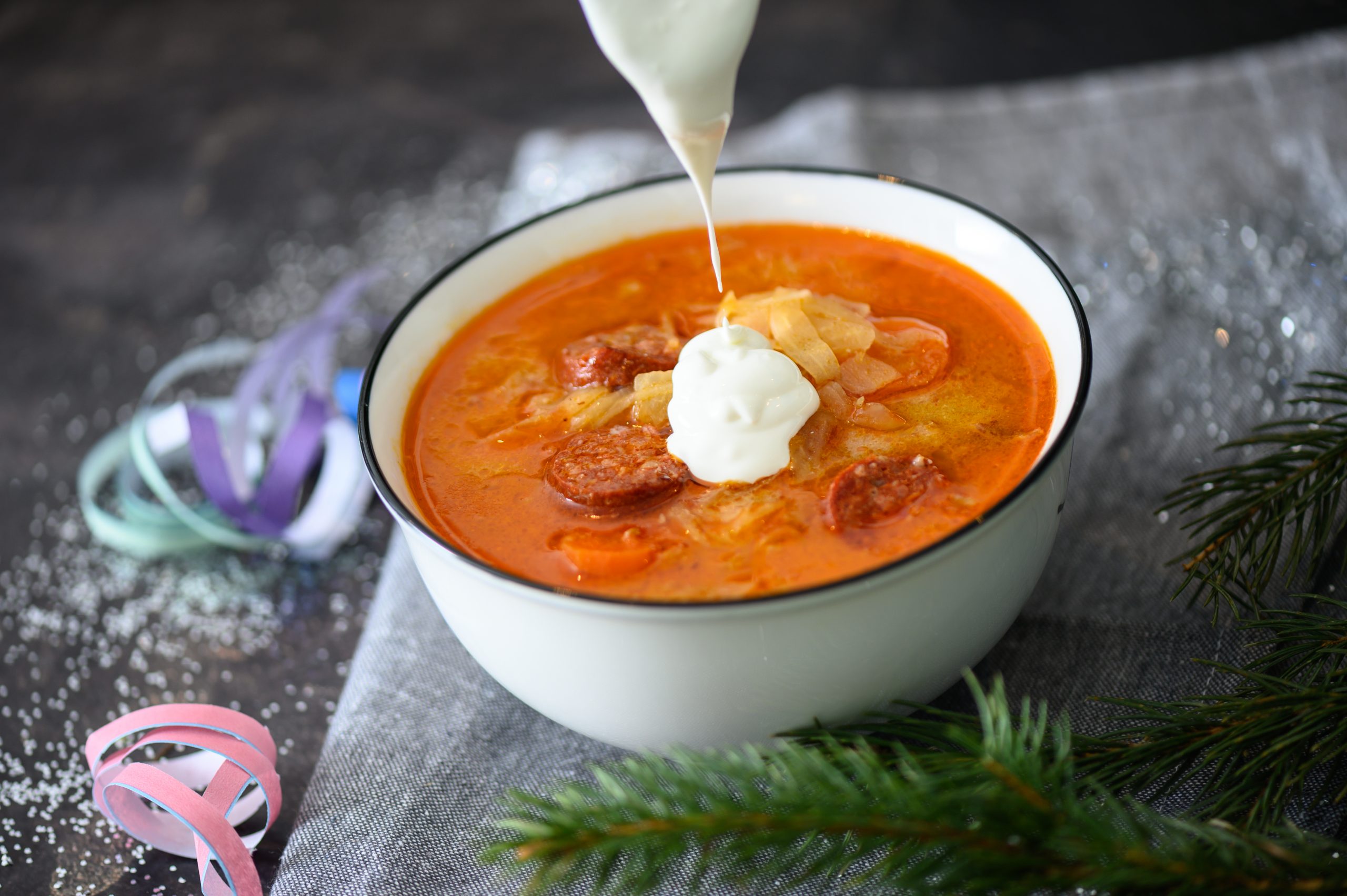
There is nothing more merciful than eating a hot bowl of korhely soup to relieve the mighty hangover of January first.Continue reading

The origin of the doughnut – just like many other foods, is not entirely clear, but there are many historical origins tied to it. Certain sources point to Italy, more specifically saying that it was already known in Roman times. This, however, can be said for every simpler dough-based dish, whose modern versions significantly differ from the aforementioned “ancient pastries.” Doughnuts ended up in Hungary through King Mátyás’ wife Beatrix, just like many other ingredients and foods. The queen was a known connoisseur, we can thank her for peppers and tomatoes, and without her it would have been far less likely that gulyás could have formed in time to become our national dish.
Translation by Tamás Vaski
A less realistic sounding but nevertheless humorous origin story says doughnuts came from Vienna. When Krapfen, the famous Viennese baker passed away, his wife took over the operation of their bakery. Guests had to wait much longer for the new baker every morning, to which they began voicing their frustration. In response, Madam Krapfen threw a piece of dough at one of the guests… But it missed the target, instead flying straight into a sizzling pan of oil. The scent enticed customers, and the first doughnut was born.

The connection doughnuts (Berliner-types) have to the festival of Farsang is that they could always be made from the leftovers found in pantries at the end of winter, allowing for one big feast before Lent. Previously, the end of winter meant the end of any remaining food, so this way there was a practical reason to start Lent as well. At this time, large Farsang feasts were called to relieve some of the discomfort that would follow during Lent. The extensive consumption of doughnuts during Lent was also believed to ensure a bountiful harvest that year, but in places like Szerémség, for example, they were eaten to reduce the chances of a storm tearing off the rooftop. Farsang was also the period of finding a partner. Girls gave doughnuts to the boys they sought out for themselves, while the boys would nickname their partners little doughnuts. If a couple broke a doughnut in half together, their wedding was almost certainly on the horizon. After all, the thread running along the outside of a doughnut signified a wedding ring. To this day, the doughnut is a symbol of Farsang, and from the dawn of time it has been a New Years favorite, which has made its way everywhere across the world.
Farsang Doughnuts
Ingredients:
+oil for frying
Activate the yeast with the sugar in lukewarm, but not too warm milk. Knead the dough together with the salt, butter, the egg yolks, and the milk with the activated yeast. This will give us a soft dough, which needs to sit for around 1-2 hours. Once it has risen, stretch it out until it is around 1-2 cm thin, and tear it up. The torn-out doughnuts should be left to rise for between 30-40 minutes. Wells can be pushed into the middle of the doughnuts, but this step can also be left out. Fry the doughnuts in a generous amount of hot oil. They each need around 4-5 minutes.
The pan should be covered while the first side is fried, then once flipped, without the cover. Place the fried doughnuts on a paper towel, then serve them with sugar and jam.

Photos and featured photo by Péter Csákvári/Hungary Today